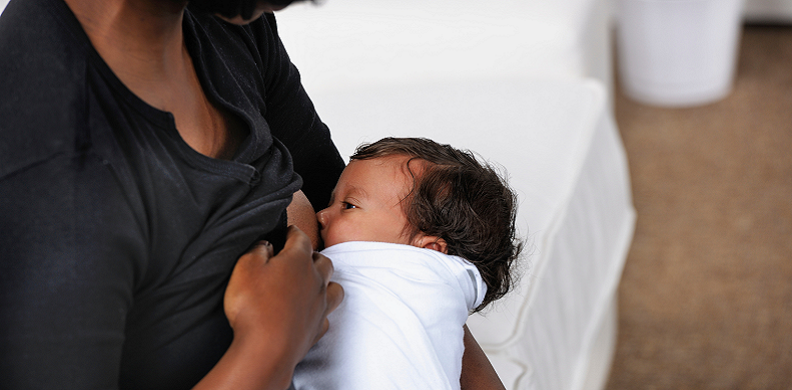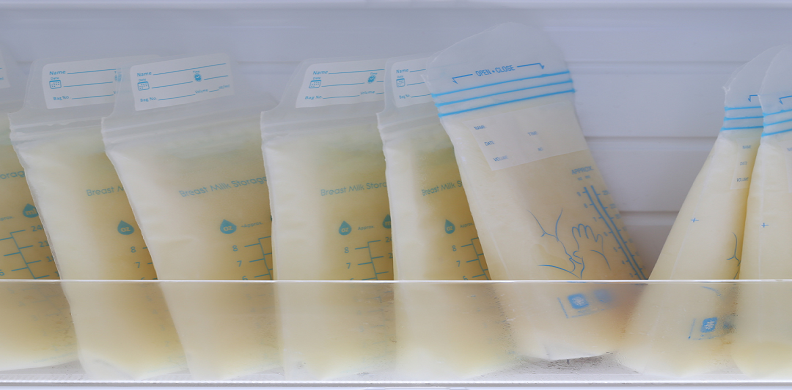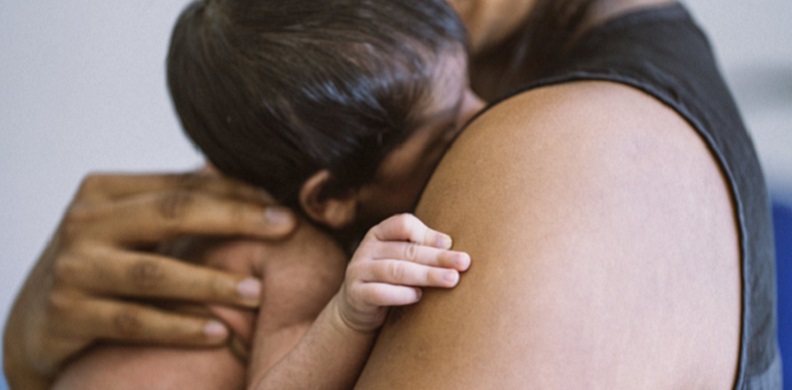
QI Implementation 101: A Primer for Race Dashboard Utilization and Next Steps for Breastfeeding Awareness Month
Race and ethnicity reporting can help hospitals and communities assure maternal health equity and respectful care, but a dashboard is just the beginning.
Posted under: Data & Analytics, Quality of Care
A couple of weeks ago, I discussed the importance of race and ethnicity reporting, and how hospitals and communities can utilize that information to assure maternal health equity and respectful care.
A dashboard is just the beginning. A dashboard offers insight into your outcomes. So, what do you do with that data?
It’s time to initiate Quality Improvement within your organization to guide meaningful change. But there are important questions to ask yourself if QI is new to you, or if you need a refresher.
Have you ever thought about why quality improvement (QI) projects work in some units, and why they don't work in others, within the SAME SYSTEM? QI is all about rapid cycle improvement and data collection. Both are important aspects of patient care and elevating maternal health.
In units where QI works well and results are sustainable over time, what do you notice?
Hospital Leadership/Boards of Directors
Nursing and Physician Leadership/Unit Level
Frontline Care Teams
Let's explore the teams themselves, the team members who will be doing the work.
Believe it or not, naysayers are not only helpful, but can be very valuable to identifying barriers and real/potential pitfalls of a QI project. The "squeaky wheels," if you will, can be some of your most invested team members who sincerely want positive change. Or they have had enough of “one trick ponies” and QI projects that were not sustainable or implemented without frontline feedback. While it may be tempting to dismiss them, it is much more important to listen and hear their concerns.
And diving EVEN further, assuming everything is lining up…
The Patients Themselves
Earlier I mentioned the engagement of patients in QI project development. Yes, this is a critical component of successful QI implementation. As important as it is for your organization and team to be engaged and dedicated to QI, what if the project you are considering does not meet the needs of your patients?
Hospital Leadership:
I can speak to health disparities through data and data analytics, but not through lived experience. Knowing how to raise up and amplify those who are best suited to lead QI projects is of utmost importance and must be a priority if equitable maternal health is to be elevated and achieved for all.
A dashboard is just the beginning. A dashboard offers insight into your outcomes. So, what do you do with that data?
It’s time to initiate Quality Improvement within your organization to guide meaningful change. But there are important questions to ask yourself if QI is new to you, or if you need a refresher.
Have you ever thought about why quality improvement (QI) projects work in some units, and why they don't work in others, within the SAME SYSTEM? QI is all about rapid cycle improvement and data collection. Both are important aspects of patient care and elevating maternal health.
In units where QI works well and results are sustainable over time, what do you notice?
Hospital Leadership/Boards of Directors
- Is hospital leadership (yes, I mean the Board of Directors and the C-Suite) invested in improving maternal health?
- Is maternal health and outcome disparities on the agenda of Boards of Directors/Trustee meetings? How often?
- Do Boards of Directors/Trustees/C-Suite ask about QI projects on a routine basis?
- Do they routinely ask about outcome disparities?
- How often do they see the data? And is this data shared with Boards of Directors? Trustees?
- How engaged is the Board in reviewing and understanding maternal health QI projects?
- Do unit leaders have an opportunity to engage directly with the Board and share best practices and success stories of improved maternal healthcare, particularly through a racial and ethnic lens?
Nursing and Physician Leadership/Unit Level
- What does nursing leadership look like?
- What does physician leadership look like?
- Do they work well together?
- Are they committed to the same outcomes and priorities?
- Are they committed to including the voices of those most impacted in perinatal project planning?
- In other words, are patients of color or others based upon identified social needs asked to participate in QI initiatives within the unit?
- Is there a Patient Advisory Council that serves to facilitate connections between patients and care teams?
- Have they assessed the activation and readiness of their teams to engage in QI work?
Frontline Care Teams
Let's explore the teams themselves, the team members who will be doing the work.
- Are they ready to engage in QI work?
- Are Doulas considered part of the frontline care team?
- Did the team have any input in creating the QI project?
- Are there identified champions and informal leaders?
- Is there bandwidth available?
- How many other projects and initiatives are underway?
- Is this considered a priority among many others?
- Is the team multidisciplinary and includes all facets of care?
- Are there identified naysayers?
Believe it or not, naysayers are not only helpful, but can be very valuable to identifying barriers and real/potential pitfalls of a QI project. The "squeaky wheels," if you will, can be some of your most invested team members who sincerely want positive change. Or they have had enough of “one trick ponies” and QI projects that were not sustainable or implemented without frontline feedback. While it may be tempting to dismiss them, it is much more important to listen and hear their concerns.
And diving EVEN further, assuming everything is lining up…
The Patients Themselves
Earlier I mentioned the engagement of patients in QI project development. Yes, this is a critical component of successful QI implementation. As important as it is for your organization and team to be engaged and dedicated to QI, what if the project you are considering does not meet the needs of your patients?
- Were assumptions made based upon conscious/unconscious bias rather than data?
- Are the measures/objectives/metrics in line with the communities you serve?
- How will patients react to and participate in a QI initiative? Are they passive or active participants?
Hospital Leadership:
- Awareness of maternal health core measures?
- View as a priority within Joint Commission Core Measures and hospital strategic plan?
- Frequency and evaluation of disparities in PC-05 and exclusive breastmilk feeding?
- Rounding on units to assess for engagement? Barriers to implementation?
- Agreement on the importance of breastmilk feeding?
- Mutual support from RN/MD leadership?
- Awareness and involvement of all team members to support the initiative, including other care team members involved in care? And yes, this includes Environmental Services, Case Management, Food and Nutrition Services, Biomedical Engineering, Pharmacy, Respiratory Therapy, and anyone meeting a patient. Does everyone buy into the importance of breastmilk feeding?
- Students part of the process and encouraged to participate in and lead QI activities?
- Does your frontline care team look like the patients you are serving? If not, what steps has your organization taken to diversify your team to ensure breastmilk feeding education is meeting the needs of your patients?
- How are Doulas used in breastmilk feeding education?
- Ongoing education? Is it Just-in-Time/bite size for ease of use?
- Use of Lactation Consultants to promote real-time education?
- How are QI Champions supported? Dedicated time for support of the QI project?
- Understanding and appreciating the importance of evidence-based practice?
- How are breastmilk feeding QI activities incorporated into daily processes? How are they communicated to teams? How do teams communicate initiatives and outcomes to each other?
- Have they been heard? Have their concerns been addressed? Even if unable to meet the need, have the inability to provide (XXX) been discussed?
- Are there not enough resources or supplies to support breastmilk feeding in the unit?
- Are there personal biases against breastmilk feeding? Did a personal experience lead to anger or frustration surrounding breastmilk feeding? (VERY IMPORTANT!!)
- Have any personal conscious/unconscious racial biases been addressed that may be creating negativity towards equity work?
- Have diverse patients been included in providing feedback related to their breastmilk feeding experience?
- Has the breastmilk feeding QI project been introduced to patients with feedback elicited prior to implementation?
- Is a Patient Advisory Committee or Team included in the QI project and process for improving breastmilk feeding?
- Have patients been asked about resources, supplies, and other needs related to breastmilk feeding?
- Have patients had an opportunity to review any hospital documentation related to Community Health Needs Assessment (CHNA) related to breastmilk feeding? Did they have an opportunity to contribute their experiences or findings?
- Can patients serve as volunteer support to encourage breastmilk feeding success?
I can speak to health disparities through data and data analytics, but not through lived experience. Knowing how to raise up and amplify those who are best suited to lead QI projects is of utmost importance and must be a priority if equitable maternal health is to be elevated and achieved for all.




